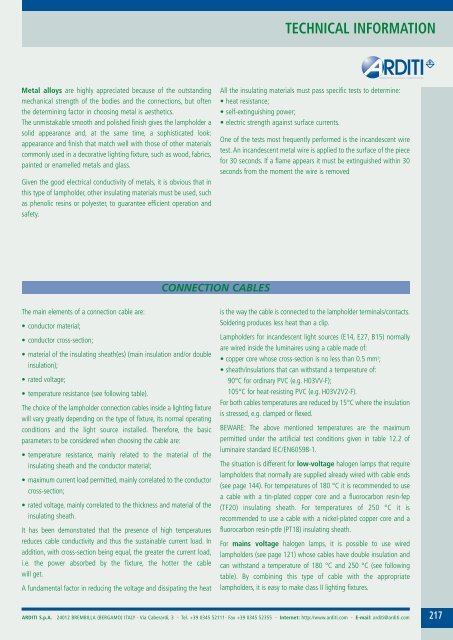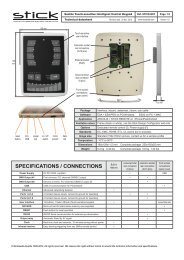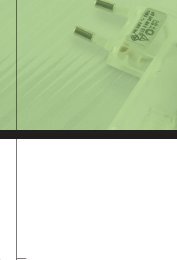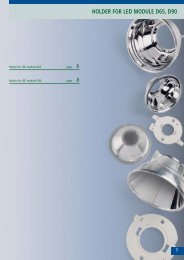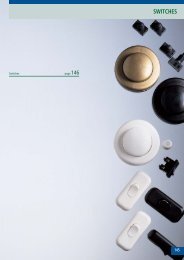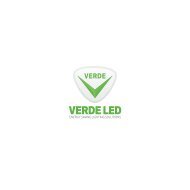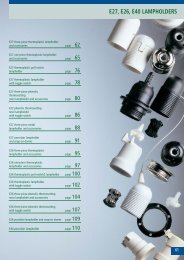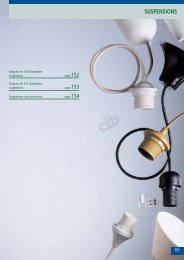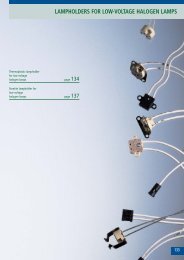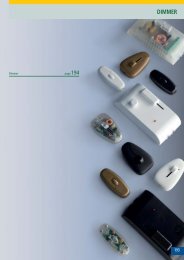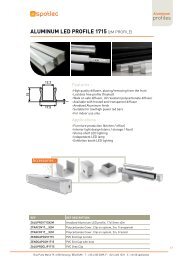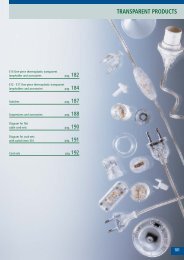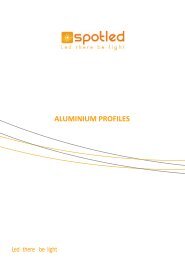e27 lampholders - Spotled
e27 lampholders - Spotled
e27 lampholders - Spotled
You also want an ePaper? Increase the reach of your titles
YUMPU automatically turns print PDFs into web optimized ePapers that Google loves.
TECHNICAL INFORMATION<br />
Metal alloys are highly appreciated because of the outstanding<br />
mechanical strength of the bodies and the connections, but often<br />
the determining factor in choosing metal is aesthetics.<br />
The unmistakable smooth and polished finish gives the lampholder a<br />
solid appearance and, at the same time, a sophisticated look:<br />
appearance and finish that match well with those of other materials<br />
commonly used in a decorative lighting fixture, such as wood, fabrics,<br />
painted or enamelled metals and glass.<br />
Given the good electrical conductivity of metals, it is obvious that in<br />
this type of lampholder, other insulating materials must be used, such<br />
as phenolic resins or polyester, to guarantee efficient operation and<br />
safety.<br />
All the insulating materials must pass specific tests to determine:<br />
• heat resistance;<br />
• self-extinguishing power;<br />
• electric strength against surface currents.<br />
One of the tests most frequently performed is the incandescent wire<br />
test. An incandescent metal wire is applied to the surface of the piece<br />
for 30 seconds. If a flame appears it must be extinguished within 30<br />
seconds from the moment the wire is removed<br />
CONNECTION CABLES<br />
The main elements of a connection cable are:<br />
• conductor material;<br />
• conductor cross-section;<br />
• material of the insulating sheath(es) (main insulation and/or double<br />
insulation);<br />
• rated voltage;<br />
• temperature resistance (see following table).<br />
The choice of the lampholder connection cables inside a lighting fixture<br />
will vary greatly depending on the type of fixture, its normal operating<br />
conditions and the light source installed. Therefore, the basic<br />
parameters to be considered when choosing the cable are:<br />
• temperature resistance, mainly related to the material of the<br />
insulating sheath and the conductor material;<br />
• maximum current load permitted, mainly correlated to the conductor<br />
cross-section;<br />
• rated voltage, mainly correlated to the thickness and material of the<br />
insulating sheath.<br />
It has been demonstrated that the presence of high temperatures<br />
reduces cable conductivity and thus the sustainable current load. In<br />
addition, with cross-section being equal, the greater the current load,<br />
i.e. the power absorbed by the fixture, the hotter the cable<br />
will get.<br />
A fundamental factor in reducing the voltage and dissipating the heat<br />
is the way the cable is connected to the lampholder terminals/contacts.<br />
Soldering produces less heat than a clip.<br />
Lampholders for incandescent light sources (E14, E27, B15) normally<br />
are wired inside the luminaires using a cable made of:<br />
• copper core whose cross-section is no less than 0.5 mm 2 ;<br />
• sheath/insulations that can withstand a temperature of:<br />
90°C for ordinary PVC (e.g. H03VV-F);<br />
105°C for heat-resisting PVC (e.g. H03V2V2-F).<br />
For both cables temperatures are reduced by 15°C where the insulation<br />
is stressed, e.g. clamped or flexed.<br />
BEWARE: The above mentioned temperatures are the maximum<br />
permitted under the artificial test conditions given in table 12.2 of<br />
luminaire standard IEC/EN60598-1.<br />
The situation is different for low-voltage halogen lamps that require<br />
<strong>lampholders</strong> that normally are supplied already wired with cable ends<br />
(see page 144). For temperatures of 180 °C it is recommended to use<br />
a cable with a tin-plated copper core and a fluorocarbon resin-fep<br />
(TF20) insulating sheath. For temperatures of 250 °C it is<br />
recommended to use a cable with a nickel-plated copper core and a<br />
fluorocarbon resin-ptfe (PT18) insulating sheath.<br />
For mains voltage halogen lamps, it is possible to use wired<br />
<strong>lampholders</strong> (see page 121) whose cables have double insulation and<br />
can withstand a temperature of 180 °C and 250 °C (see following<br />
table). By combining this type of cable with the appropriate<br />
<strong>lampholders</strong>, it is easy to make class II lighting fixtures.<br />
ARDITI S.p.A. 24012 BREMBILLA (BERGAMO) ITALY - Via Caberardi, 3 - Tel. +39 0345 52111- Fax +39 0345 52355 - Internet: http://www.arditi.com - E-mail: arditi@arditi.com 217


